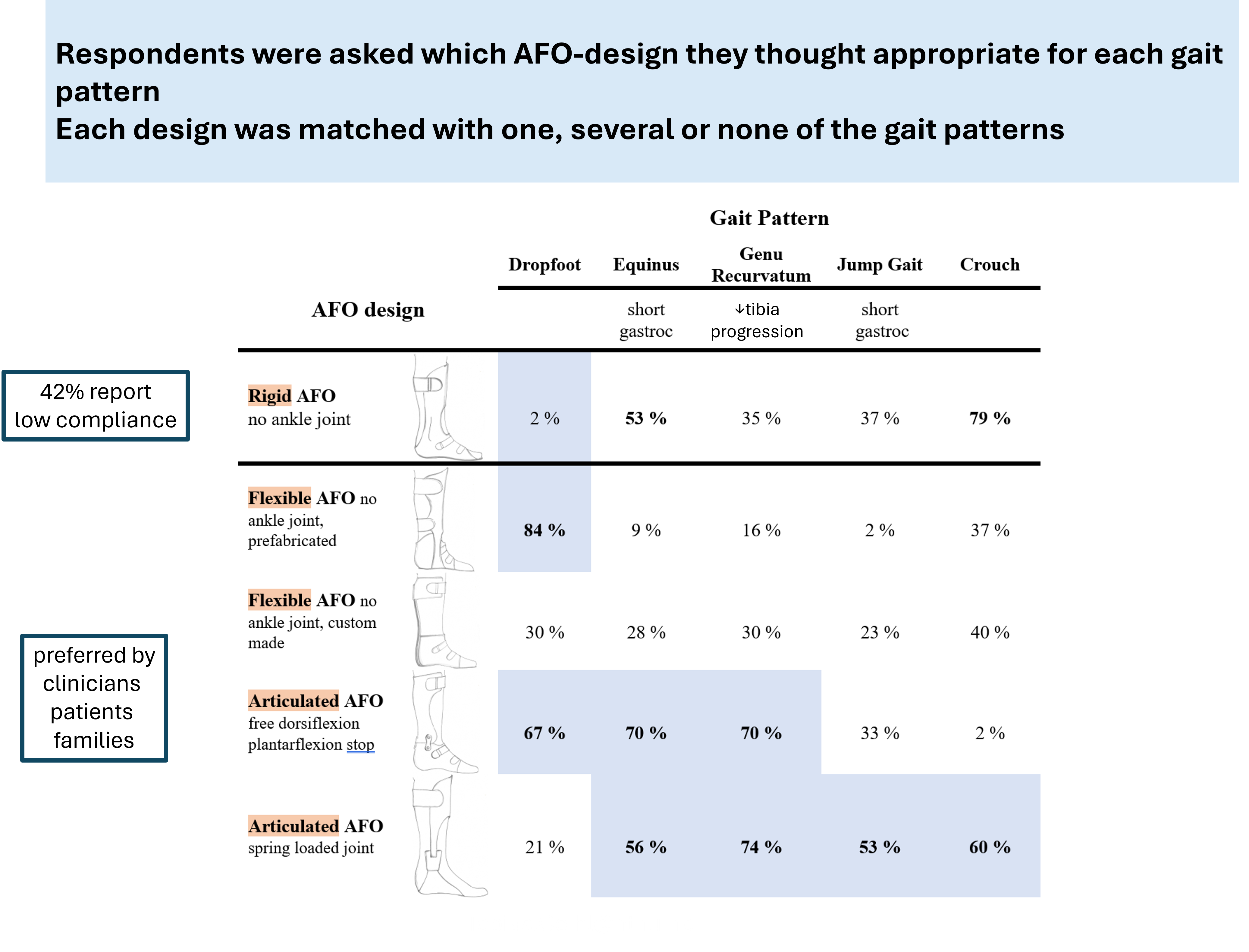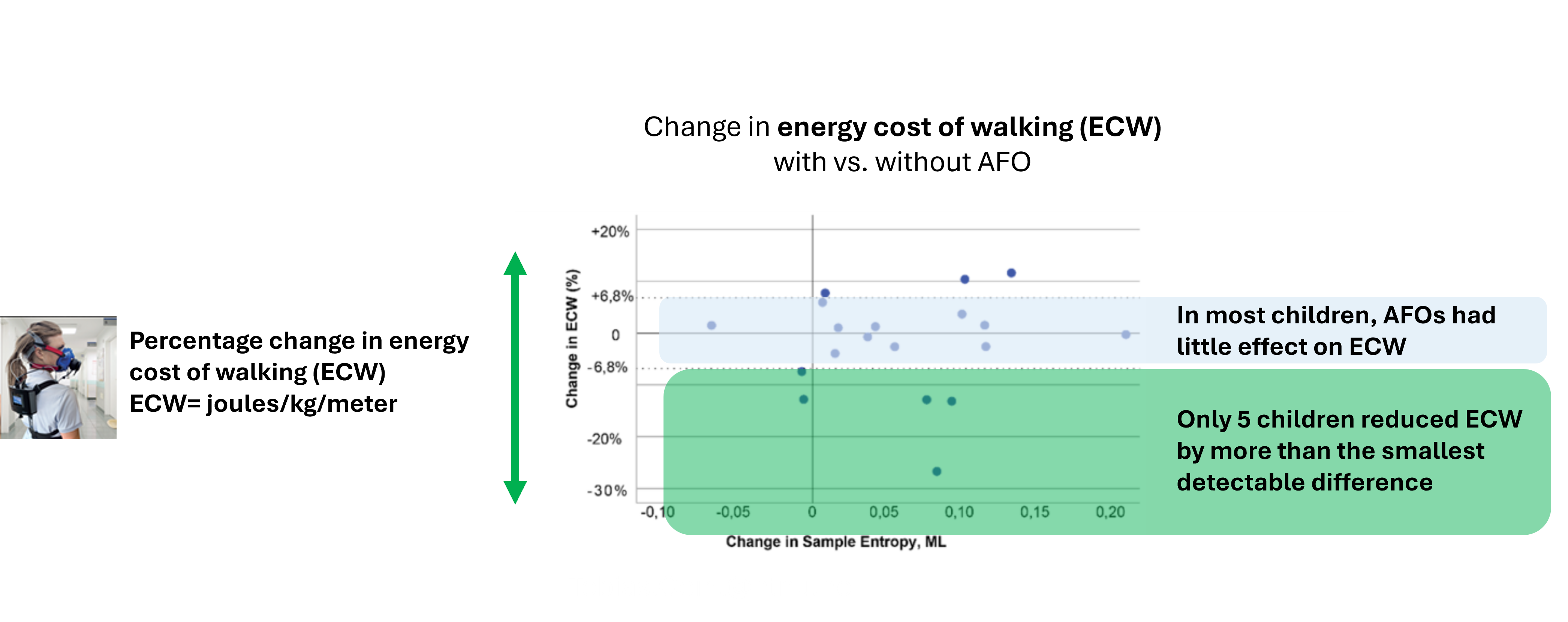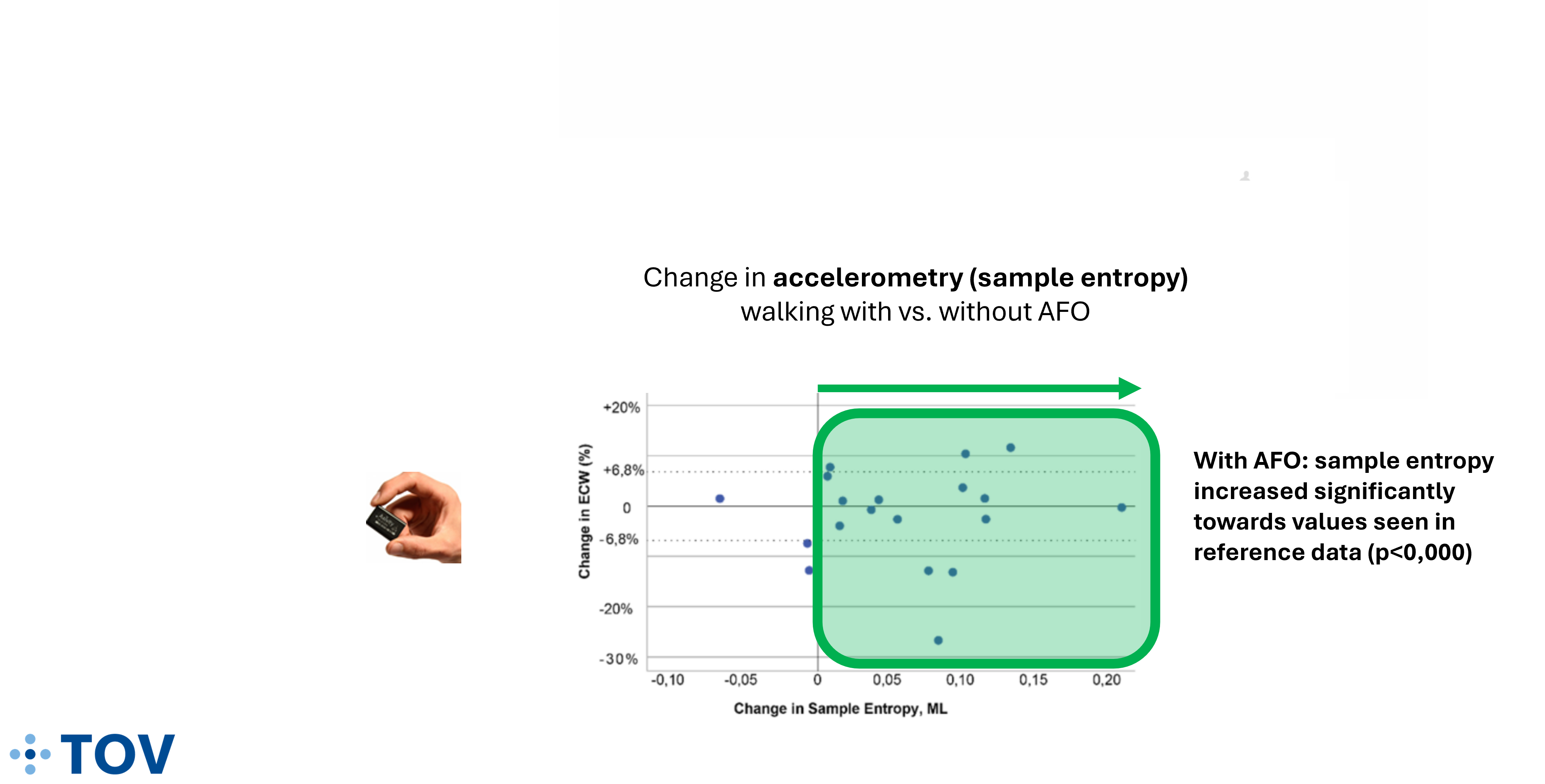Ankle foot orthoses for children with Cerebral Palsy
Ankle-Foot Orthoses for children with Cerebral Palsy
Improving the evidence base for use of Ankle-Foot Orthoses for children with Cerebral Palsy
Ankle-Foot Orthoses (AFOs) are the most common type of orthosis used for children with Cerebral Palsy (CP). They are used to improve function (such as improved walking), preserve muscle length and foot alignment and prevent progression of contractures and deformities.
The evidence base for the prescription, design and use of AFOs is limited. There are no clear standards on how to choose the best AFO for an individual child and no established methods to assess whether an AFO is used as intended.
Current Research Areas
1. Gait patterns in children with Cerebral Palsy and the effect of AFOs
Children with Cerebral palsy who can walk, often do so with complex gait deviations. Gait pattern classification systems have been developed to systematically describe these gait deviations. We explore how a gait pattern classification system can be used to evaluate the effect of AFOs on gait kinematics and energy cost of walking.

We have also explored current AFO provision practices for children with CP and investigated which AFO-designs Norwegian orthotists approve for several gait patterns.

2. Wearing behavior
Very often practitioners recommend that children use AFOs 6-7 hours per day. In practice, we know very little about AFO wearing behavior and this is crucial when evaluating the effect of orthotic interventions.
MSc Student Ida Tamnes explores how we can use wearable sensors to detect AFO wearing behavior in children with CP.
In his MSc thesis, Quentin Michaudet investigated accelerometry and temperature sensors to detect whether AFOs are worn or not.
3. Activity patterns
AFOs are often designed to improve gait. This gait assessment is done in the corridor of a clinic. However, we want AFOs to function as best as possible in real-life situations, but we do not really know what children are doing during the course of a week. To optimize orthotic design we need to be able to describe how much a child walks, runs or plays football.
This work focuses on the use of motion sensors to identify activity patterns in children with CP.



